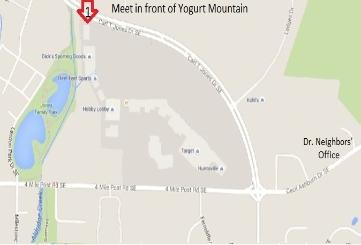Walk With the Doc Saturday June 24th, 7:00 am How much sun is right for you? By tradition, the summer solstice is considered the first day of summer. In case you slept late, it began at 5:07 A.M. on June 21st. Soon you may be hearing more about the dangers of sun exposure vs. the dangers of not getting enough sun. Complicating the discussions will be opinions about sunscreens blocking vitamin D absorption, sunscreen additives implicated as carcinogenic or endocrine disrupters and questionable claims about sunscreen lotion effectiveness. To place the issue in perspective let’s review the source of the apparent dilemma. • There is no amount of sun exposure (esp. UVA and UVB) that is safe enough to prevent skin cancer. • Avoiding sun completely has negative health effects comparable with smoking. So what’s a person to do when what you need might be bad for you? Perhaps pay less attention to the news and more to common sense. Still wise is the adage, “moderation in all things except moderation.” As for the right amount of sun, that depends on several factors including skin type, time of day, season, amount of body exposed to sun, etc. During the spring and summer, you may make 1,000 IU of vitamin D in 10 minutes, with 25% of the body exposed. In the fall expect to need 30 minutes of sun to make 1000 IU. During winter it may take over two hours to make 1,000 IU of vitamin D with 10% of the body exposed. If you need to be in the sun longer, you will need a sun screening strategy. The best solution is a wide brimmed hat, sun blocking clothing and UV blocking sunglasses. Baseball caps don’t measure up since ears and neck remain exposed. If the nature of your outdoor activity makes this defense impractical then sunscreen lotion may be your only alternative. While sunscreen lotions can be effective they seldom are. Most people don't apply enough and don't reapply it frequently enough. One study found that only 15% of men and 30% of women used sunscreen as recommended. Almost half of men never use sunscreen lotions. Some studies have linked ingredients in some sunscreen lotions with early puberty, cancer, and other diseases. For example, oxybenzone is a chemical that has been called out by consumer media groups as an endocrine disrupter. A study on rats given large amounts of oral oxybenzone raised concern. The main concern with sunscreen additives is that most were Grandfathered in under FDA rules and have yet to be formally reviewed. If you are concerned about chemical additives then use one of the mineral-based sunscreen lotions. These lotions have suspended particles (zinc, titanium dioxide, etc.) that are not absorbed into the skin. Be aware that sunscreens with high Sunburn Protection Factors (SPF) don’t necessarily offer significantly greater protection. High SPF products may tempt you to use too little sunscreen and stay in the sun too long. An SPF above 50 is unlikely to provide much added benefit. For example, an SPF of 15 blocks 93.3% of UVB radiation and an SPF 45 blocks 97.8% of UVB radiation. While you may have guessed an SPF of 45 would provide three times the protection of an SPF of 15, the advantage of the higher SPF is less than 5%. At SPFs above 50 the advantage is near negligible. The UVB radiation blocking for common SPF ratings is shown below. SPF 15 blocks 93.3% SPF 30 blocks 96.7% SPF 40 blocks 97.5% SPF 45 blocks 97.8% SPF 50 blocks 98.0% The SPF only measures the protection provided against UVB radiation. SPF does not measure protection against UVA and other harmful radiation. Because of consumer faith in SPF ratings the message that UVA protection does not increase substantially with higher SPF is often missed. Of course, SPF ratings and the expected protection only apply if the sunscreen lotion is used as recommended. For more about sunscreens, The Environmental Working Group, and The Vitamin D Council provide helpful consumer information. While sunscreen lotions can keep you from getting sunburn, they may not protect skin from all types of sun damage. As a result of increased consumer interest, some have improved their ability to block rays that damages DNA and age skin. Despite the science suggesting sunscreen lotion should be helpful, there is little evidence sunscreen lotions prevent most skin cancers. The common sunscreen additive vitamin A may even speed development of skin cancer. Sunscreen lotions have many limitations and should be considered the tool of last resort. The controversy over effectiveness and safety is unlikely to subside anytime soon. For now, FDA’s advice is that chemicals used for decades in sunscreens are considered safe until proven otherwise. In contrast, the Europeans ban many products that FDA allows. Independent advocacy groups also take a dim view of many sunscreen additives that FDA allows. To see how The Environmental Working Group rates your sunscreen lotion Click Here and then enter the name of your favorite sunscreen lotion. A late afternoon or early morning walk is my favorite sun protection strategy. If you are looking for SPF 50+ equivalent effectiveness without messy lotions then 7:00 A.M. is your answer. Let the morning inspire you with its many wonders - fresh air, a light breeze, a world awakening with new life. Join me for a delightful morning walk. Nancy Neighbors, MD Let’s take a walk Date: Saturday, June 24th Location: Jones Family Park (see map) Time: 7:00 am (Meet in front of Yogurt Mt.) Yogurt Mt. is the last store at the end of Valley Bend Shopping Center). If cloudy, bring an umbrella, we walk come rain or shine. Click here for Dr. Neighbors’ 2017 news page If you would prefer to discontinue receiving ideas about healthy living from Dr. Neighbors please phone (256) 882-6085. |
